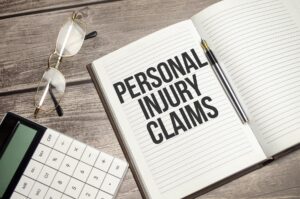Many factors determine liability (or fault) for damages and injuries stemming from motor vehicle accidents. For example, Driver 1 is seriously injured when Driver 2 cuts in front of Driver 1 after turning onto the street. It may seem pretty clear at first blush that Driver 2 is at fault for causing the accident. However, Driver 1 may be found partially liable if he or she was speeding or dangerously changed lanes illegally before the accident. Deciding who is responsible for damages or injuries in automobile accidents is informed by motor vehicle statutes, but that is not the only factor that will be considered. States vary on how the fault of each party is treated.
In pure comparative negligence states, a party may recover an amount inversely proportional to that party’s fault. So,for example, if Driver 1 is 90% at fault, then Driver 2 would be liable for 10% of the harm Driver 1 suffered from the accident. Idaho is a so-called “modified comparative negligence” state. That means if both parties are partially at fault, the parties only recover for the amount the other party was at fault and one cannot recovery anything if he or she was equally or more at fault than the other party. Other states apply the so-called contributory negligence theory. Contributory negligence means if a party is at fault at all for the accident (even if only 1%), he or she cannot recover at all. Only a handful of states still apply this draconian rule.
Oftentimes fault can be determined by reviewing traffic laws to see if any have been violated in order to determine if a person has acted negligently or otherwise culpably.
There are four primary levels of fault:
- Negligence
- Recklessness or wanton conduct
- Intentional misconduct
- Strict liability (regardless of fault)
Negligence means careless or unreasonable conduct which results in harm or damage. This is the most common way to establish “fault” in auto accidents. Drivers could be considered “negligent” for failing to do something (like not yielding the right-of-way to avoid a collision) or by actively doing something (like running a red light at an intersection or speeding).
Reckless or wanton conduct refers to disregarding the safety and welfare of others. A person who consumes alcohol or drugs and then gets behind the wheel and causes an accident would be reckless.
Intentional misconduct is just as it sounds – a party intentionally causes harm to another. This is rare in auto accident cases but can occur in a road rage situation or similar situation where someone might intentionally drive his or her car into another’s car out of anger.
Strict liability, even in the absence of fault, may be imposed for injuries involving a defective product or goods and/or extra-hazardous activities (like transporting explosive chemicals). Again, strict liability is rare in auto accident cases.
Establishing fault can be fairly cut and dry, but sometimes it is not. If you cannot establish the other party’s fault, you cannot recover for your injuries or for the damage to your car. Even if you think someone was at fault in an accident that you were involved in, it is wise to have the facts of your claim reviewed by an Idaho injury attorney as soon as possible because evidence of fault could be lost as a result of delay.
Accident attorney Ron Shepherd of Shep Law Group provides free consultation for injury cases. Thirty minutes may be all that it takes to find out whether an individual was negligent or reckless in causing harm to you. If so, you may be able to collect damages to cover your losses.
The post Who is at fault? appeared first on Auto Injury Idaho.




